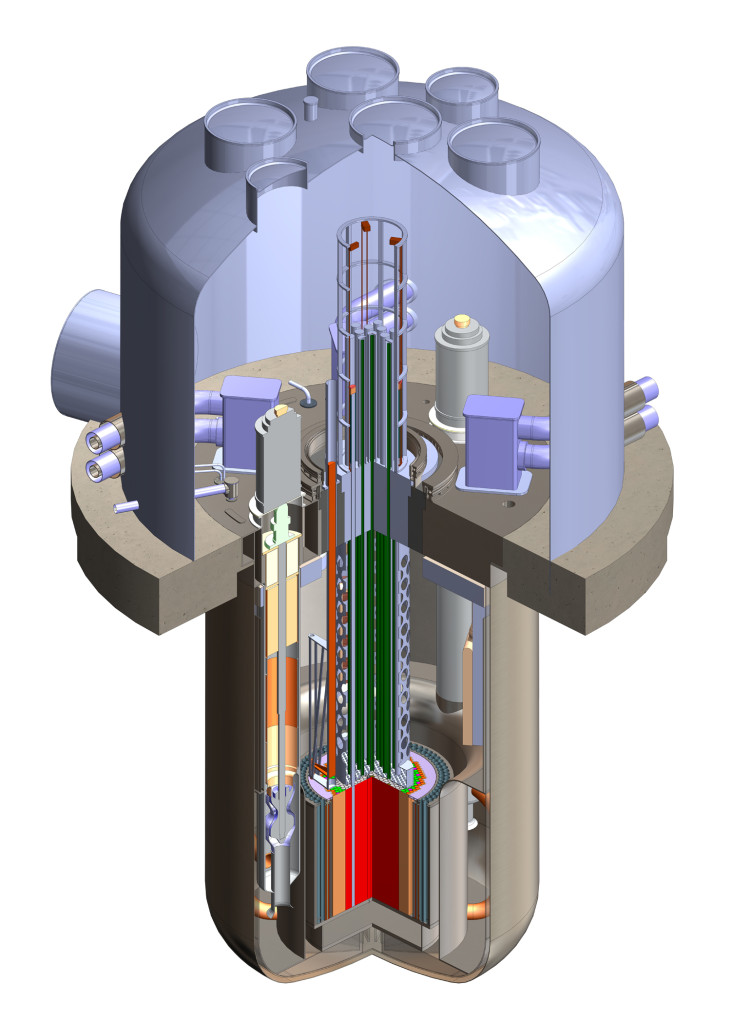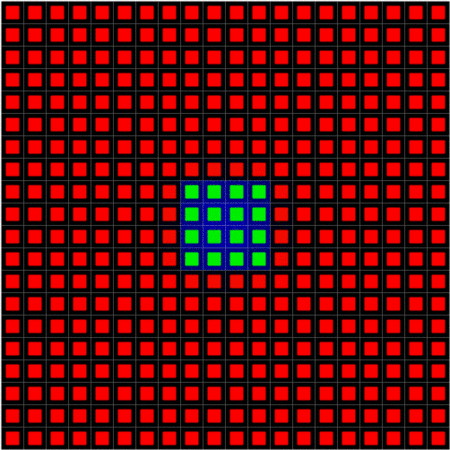
As a part of this blog’s commitment to talking about the future, I’m starting a series of posts on new and different kinds of power generation — because, short of a major cataclysm, we’re going to need to find cleaner power sources soon or “run the two degree experiment.” Today: the Travelling Wave Reactor.
***
You might have heard of the TWR in a TED talk back in 2010 when billionaire philanthropist Bill Gates got up to talk about it. He’s since founded a company, called TerraPower, which, if you go look at their website, is hawking a not-yet-really-real “generation IV” reactor, with a goal of having a 600MW TWR prototype in operation by 2022. But before we talk about practicalities like “is this even possible?” let’s back up and talk about the theory.
There are two main types of nuclear reactors these days: “fast” neutron and “slow.” Basically, when you stick a bunch of uranium together in one spot, it’s not naturally going to produce a sustained reaction. That’s because the energy of the free neutrons produced by the breakdown of the uranium (that’s how the chain reaction works, neutrons pop off and hit other atoms and cause them to split, too) is actually too *high* (or fast) to react right.
That’s because there’s two kinds of uranium in uranium. There’s U238 and U235 (note to clever nuclear scientist types: we’re going to ignore U234 for now). Over 99% of naturally occurring uranium is U238, but that only reacts efficiently when you get really *really* fast neutrons hitting it. Much faster than you’d normally get. The other 1% is U235, which works better with slower neutrons. So the two solutions are: a) slow down the neutrons (usually by submerging the whole thing in water), or b) raise the quantity of U235 in your fuel (“enrich” it) until it doesn’t really *matter* that the fast neutrons are too fast, because enough of them are going to interact that it doesn’t matter if it’s inefficient. Either way the U238 is pretty much useless.
Most of the reactors in operation are “slow” ones. There are some fast reactors — they can be smaller, so they work on nuclear submarines pretty well — but they’re also a lot more expensive because refining nuclear fuel is an expensive thing to do.
The TWR, in theory, is a fast reactor that uses a little bit of enriched fuel, and whole lot of crappy fuel.
In fact, it burns the other 99% of the uranium, the U238 — literally the “nuclear waste” that’s sitting around in nuclear waste dumps. That’s what we mean by “depleted” uranium — it’s been depleted of U235, and now it’s all just that U238 stuff that’s so hard to get to react that it’s not really worth it.
Except here’s the idea: under the right conditions, you can convince the fuel to enrich itself.
That’s the basic concept behind the TWR. You stick some really refined fuel (Plutonium 239) in the middle of some “depleted” uranium, and as it breaks down it produces so much in the way of neutrons that it actually turns the stuff that would normally be waste into more enriched fuel. Just like the picture below. Nuclear physics is very cool.

So that’s the theory, but is it safe? A lot of people like to think of nuclear power as this awful thing for the environment, but in fast reactors — and even more so in a well-done TWR — the nuclear waste is very limited. It uses other reactors’ nuclear waste as its fuel, and its waste is a lot easier to clean up. Not to mention not releasing any CO2 or methane into the environment.
It’s also not a high-pressure system. Explosions at nuclear power plants aren’t nuclear explosions per se. They’re steam explosions, filled with nuclear materials. And that’s because in a traditional reactor the components are highly pressurized. A TWR, in theory, would be at neutral pressure, and would use the temperature of the liquid sodium surrounding the fuel to continue to transfer the heat away passively even if the circulation pumps shut down (as they did at Fukushima). On the other hand, sodium and air don’t get on well, so things have a potential to go poorly in that regard if there’s ever a leak. So in answer to the question “is it safe?” we could reasonably say “tolerably so, with proper testing beforehand and monitoring during.”
So then I suppose the real question is: can they actually do it? Well, the first problem with a TWR is that as the wave travels, the reaction travels, and you have to follow it to use it to generate power. TerraPower, as they show in the video below, actually plan to have a robotic arm that moves the fuel rods around to, in effect, keep the travelling wave stationary. Which makes the whole “travelling wave” a bit of a misnomer, but it doesn’t really matter.
Based on what I’ve read, I actually don’t think it’s that unreasonable for them to be able to accomplish it. It’s not that crazy a design, and it’s a clever idea.
But can they get it done on schedule (2022?) and in a way that is not just economically viable, but actually profitable? Remember: if it’s not profitable, nobody will ever build one. And this is where reality creeps in.
TerraPower does not have a working prototype. What they have is a lot of computer models, investors, and a fairly evolved program to come up with a “cladding” material — something to line the whole thing with — which is actually very important to building a reactor full of radioactive materials at high temperatures. They’re also restarting a fuel manufacturing facility (which, if nothing else, will be good for NASA in the future). But I’m still not convinced.
I guess what it comes down to is I’m not ready to call it until I see someone actually powering so much as a lightbulb with it. Until then, it’s just very advanced “vaporware,” and maybe we’re better off exploring other alternatives as well. Remember, it’s not one or the other when it comes to the power of the future, it’s somewhere between “all of the above” and “whatever you can do to avert disaster.”
Still, it’ll be interesting to watch where this one goes.
***
Richard Ford Burley is a doctoral candidate in English at Boston College, where he’s writing about remix culture and the processes that generate texts in the Middle Ages and on the internet. In his spare time he writes about science, skepticism, and feminism (and the energy of the future) here at This Week In Tomorrow.
